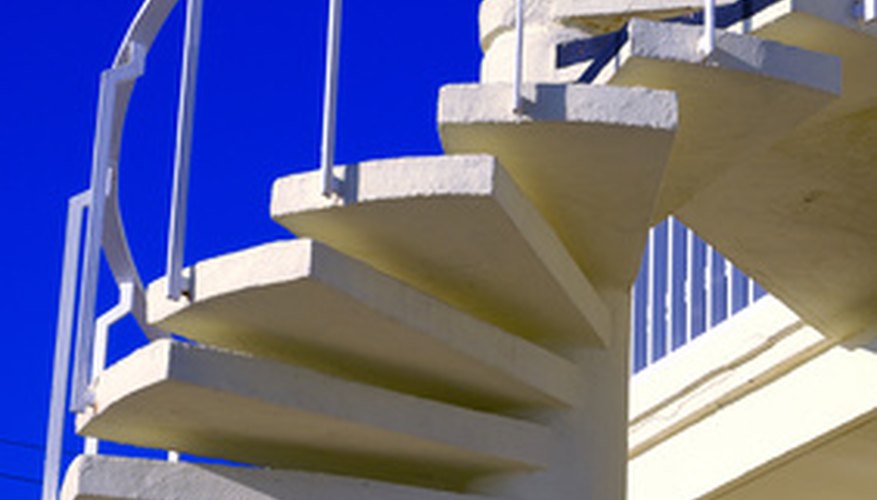Stairs are subject to a lot of abuse, and when they are painted, it is usually with a heavy-duty paint or varnish that can be difficult to remove. There are several techniques for stripping paint off wood staircases, but it's important to work carefully. Some of the more extreme processes can easily damage the wood.
Removing Clear Finishes
If stairs have been finished with shellac or lacquer, which isn't very likely, you can remove the finish with lacquer thinner and steel wool. The thinner will dissolve the finish which you can then scrub off. Be sure to keep the steel wool clean and full of thinner, and wear a respirator. In the more likely case that the stairs were finished with varnish or urethane, you can often sand these off with an orbital sander without the need for a stripper, especially if the finish is well-worn. Use medium to coarse-grit paper, and scrape in the corners that the sander won't reach with a pull scraper. Sanding won't work well on a thick surface of varnish, however. For this, you will need to resort to a chemical stripper.
- If stairs have been finished with shellac or lacquer, which isn't very likely, you can remove the finish with lacquer thinner and steel wool.
- In the more likely case that the stairs were finished with varnish or urethane, you can often sand these off with an orbital sander without the need for a stripper, especially if the finish is well-worn.
Removing Paint and Varnish
Use a commercial stripper to remove paint and thick coats of varnish. Spread a generous coat with a paintbrush and work it into the surface as you paint. Give the stripper plenty of time to work, but don't let it dry out before you scrape it off. Use a paint scraper to remove it, and the old paint or varnish should come with it. Wash the treads with a strong solvent; lacquer thinner works well for this. The solvent will dissolve the paint residue without raising the grain of the wood. Wear gloves to protect your hands when using strippers because they are caustic. Old layers of paint that are difficult to remove may require special treatment with a lye-based stripper. One technique for using this is to spread it on, then lay a sheet of waxed paper on top and let the stripper work for up to 48 hours. When you peel away the paper, the paint will come with it. Following this process, it is important to wash the treads thoroughly with a vinegar solution to neutralise the dye. If you don't, it will continue eating into the wood and will prevent new paint from adhering. This kind of stripper darkens the wood, and the vinegar will raise the grain, so only do this if you are going to hide the wood with paint or heavy varnish.
- Use a commercial stripper to remove paint and thick coats of varnish.
- This kind of stripper darkens the wood, and the vinegar will raise the grain, so only do this if you are going to hide the wood with paint or heavy varnish.
Stripping with a Heat Gun
Heat is a sure way to remove old paint, but be careful to keep the heat gun moving, or it may scorch the wood. Let the heat soften the paint, then scrape it off with a scraper. You can then remove whatever paint doesn't come off with a solvent or by sanding. Keep a little water handy in case the paint or wood catches fire.
- Heat is a sure way to remove old paint, but be careful to keep the heat gun moving, or it may scorch the wood.
Scraping and Sanding
There are many kinds of scrapers available, but the kind that works best on floors and stair treads is the pull type. This kind of scraper needs a sharp blade to be effective, so keep a belt sander handy and use it to periodically grind the edge. Scraping is the best way to remove paint and varnish from the corners and along the edges of the risers. No matter how you remove the bulk of the finish, you will have to sand the wood before you re-coat the treads. Use an orbital sander for this, not a belt sander, and do it after you have finished scraping. Start with medium-to-coarse paper, then switch to a finer paper to remove the scratch marks from the sander, especially if you plan to re-coat with a clear finish.
- There are many kinds of scrapers available, but the kind that works best on floors and stair treads is the pull type.
- Start with medium-to-coarse paper, then switch to a finer paper to remove the scratch marks from the sander, especially if you plan to re-coat with a clear finish.
